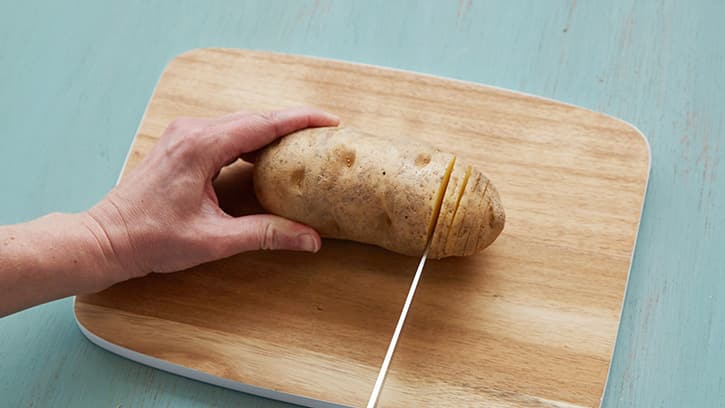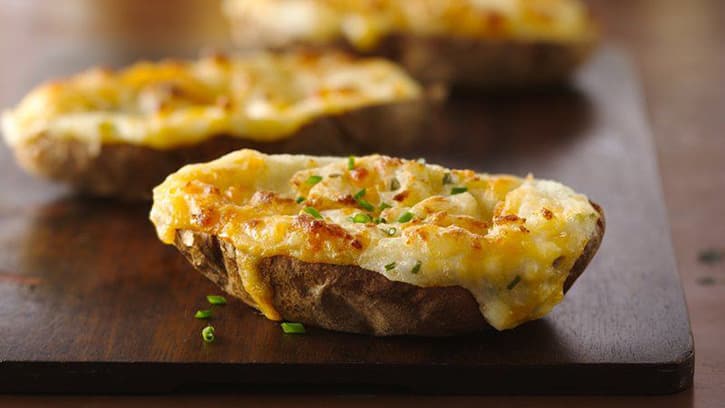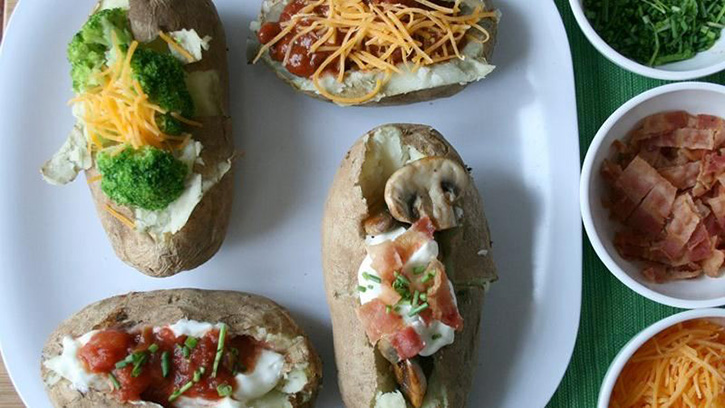(function() {
document.addEventListener('DOMContentLoaded', function() {
var componentMetadata = JSON.parse('\x7b\x22componentName\x22\x3a\x22ChannelLinks_8918a218-1030-4c2b-87de-605f1d7de656\x22,\x22deferOptions\x22\x3a\x7b\x22deferComponent\x22\x3afalse,\x22deferType\x22\x3a\x22None\x22,\x22deferId\x22\x3a\x22r76cb8bd800274a558503519f953c600e\x22,\x22deferredContainerId\x22\x3a\x22\x2fchannelLinks\x22,\x22deferredContainerView\x22\x3anull\x7d,\x22viewName\x22\x3a\x22ChannelLinks\x22\x7d');
var configuration = {};
var moduleName = 'channelLinks';
var isVueModule = true;
GeneralMills.PandoSites.RegisterControlInstance(moduleName, configuration, componentMetadata, isVueModule)
});
})();
(function() {
document.addEventListener('DOMContentLoaded', function() {
var componentMetadata = JSON.parse('\x7b\x22componentName\x22\x3a\x22ActionToolbar_59e5fa31-dc57-46ea-93d1-265650a760f0\x22,\x22deferOptions\x22\x3a\x7b\x22deferComponent\x22\x3atrue,\x22deferType\x22\x3a\x22OnDemand\x22,\x22deferId\x22\x3a\x22r64438c448da141f1b97572472d3894ff\x22,\x22deferredContainerId\x22\x3a\x22\x2ffloatingActionToolbar\x2ffloatingActionToolbar_interop\x22,\x22deferredContainerView\x22\x3a\x22InteropDeferWrapper\x22\x7d,\x22viewName\x22\x3a\x22ActionToolbar\x22\x7d');
var configuration = {"contentId":"98f5d1ab-d659-4c56-a68e-3af7e2509f78","toolbarSettings":{"id":"59e5fa31-dc57-46ea-93d1-265650a760f0","regAction":"FAVORITE","eSourceCode":11275,"namePassedToEvents":"ArticleStandardLongFormToolbar","buttons":[{"addFavoriteErrorMessage":"Sorry, something went wrong. Please save again.","removeFavoriteErrorMessage":"Error occurred while removing from favorites","regAction":"FAVORITE","eSourceCode":11275,"isCurrentUserAnonymous":false,"isFavoriteItem":false,"id":"16a29701-2b75-4d9a-aa9c-860376da50d7","allowedForAnonymousUsers":false,"type":"Favorite","displayName":"Save","namePassedToEvents":"Favorite","cssClassName":"atButtonFavorite","privacyOptOutMessage":"\u003cdiv class=\u0027privacyMessage\u0027\u003e\n\u003ch3\u003eThis feature is not available with your current cookie settings.\u003c/h3\u003e\n\u003cp\u003eYou can \u003ca href=\u0027#\u0027 data-show-preference-center=\u00271\u0027\u003eupdate your privacy settings\u003c/a\u003e to enable this content. Please enable “Functional Cookies” to use this feature.\u003c/p\u003e\n\u003c/div\u003e","showPrivacyOptOutMessage":false},{"providerName":"pinterest","providerNamePassedToEvents":"Pinterest","shareUrlFormat":"//pinterest.com/pin/create/link/?url={0}","id":"c18cf08e-e436-4cd0-a180-1bafb15369a6","allowedForAnonymousUsers":true,"type":"Social","displayName":"Pinterest","namePassedToEvents":"Pinterest","cssClassName":"atButtonPinterest","privacyOptOutMessage":"\u003cdiv class=\u0027privacyMessage\u0027\u003e\n\u003ch3\u003eThis feature is not available with your current cookie settings.\u003c/h3\u003e\n\u003cp\u003eYou can \u003ca href=\u0027#\u0027 data-show-preference-center=\u00271\u0027\u003eupdate your privacy settings\u003c/a\u003e to enable this content. Please enable “Functional Cookies” to use this feature.\u003c/p\u003e\n\u003c/div\u003e","showPrivacyOptOutMessage":false},{"templateId":"13bdd311-4300-4fb8-9d78-9cbaf98f5578","dialogHeading":"Email Article","emailCode":"BC_ContentEmail","dialogSettings":{"cancelButtonText":"Cancel","copyToSenderLabel":"Send a Copy to Myself","emailAddressesLabel":"* Email Address(es)","emailInstructionText":"Separate email addresses with commas","fromText":"From:","privacyPolicyText":"\u003cp\u003e\u0026copy;2024 General Mills, Inc. All Rights Reserved. This information will only be used to send an email to your friend(s) and will not be saved. Please read our \u003ca rel=\u0022noopener noreferrer\u0022 rel=\u0022noopener noreferrer\u0022 href=\u0022http://www.generalmills.com/company/privacy-policies/privacy-policy-us\u0022 target=\u0022_blank\u0022 shape=\u0022rect\u0022\u003ePrivacy Policy\u003c/a\u003e.\u003c/p\u003e","requiredFieldText":"* Required","sendButtonText":"Send","senderEmailAddressLabel":"* Your Email Address","senderFirstNameLabel":"* Your First Name","sendToText":"Send To:"},"id":"be9422a3-85a8-4c31-86f5-e171255bb89d","allowedForAnonymousUsers":true,"type":"Email","displayName":"Email","namePassedToEvents":"Email","cssClassName":"atButtonEmail","privacyOptOutMessage":"\u003cdiv class=\u0027privacyMessage\u0027\u003e\n\u003ch3\u003eThis feature is not available with your current cookie settings.\u003c/h3\u003e\n\u003cp\u003eYou can \u003ca href=\u0027#\u0027 data-show-preference-center=\u00271\u0027\u003eupdate your privacy settings\u003c/a\u003e to enable this content. Please enable “Functional Cookies” to use this feature.\u003c/p\u003e\n\u003c/div\u003e","showPrivacyOptOutMessage":false},{"providerName":"facebook","providerNamePassedToEvents":"Facebook","shareUrlFormat":"//facebook.com/sharer/sharer.php?u={0}","id":"6c3f442d-6ffe-460f-8360-b02b122d326c","allowedForAnonymousUsers":true,"type":"Social","displayName":"Facebook","namePassedToEvents":"Facebook","cssClassName":"atButtonFacebook","privacyOptOutMessage":"\u003cdiv class=\u0027privacyMessage\u0027\u003e\n\u003ch3\u003eThis feature is not available with your current cookie settings.\u003c/h3\u003e\n\u003cp\u003eYou can \u003ca href=\u0027#\u0027 data-show-preference-center=\u00271\u0027\u003eupdate your privacy settings\u003c/a\u003e to enable this content. Please enable “Functional Cookies” to use this feature.\u003c/p\u003e\n\u003c/div\u003e","showPrivacyOptOutMessage":false},{"layoutParameter":"p%3d1","id":"de022929-4416-4bc9-ab3c-ae5711d562bf","allowedForAnonymousUsers":true,"type":"Print","displayName":"Print","namePassedToEvents":"Print","cssClassName":"atButtonPrint","privacyOptOutMessage":"\u003cdiv class=\u0027privacyMessage\u0027\u003e\n\u003ch3\u003eThis feature is not available with your current cookie settings.\u003c/h3\u003e\n\u003cp\u003eYou can \u003ca href=\u0027#\u0027 data-show-preference-center=\u00271\u0027\u003eupdate your privacy settings\u003c/a\u003e to enable this content. Please enable “Functional Cookies” to use this feature.\u003c/p\u003e\n\u003c/div\u003e","showPrivacyOptOutMessage":false}],"isSticky":true},"userSettings":{"isCurrentUserAnonymous":true,"isFavoriteItem":false},"pageAttributes":{"url":"https%3a%2f%2fwww.bettycrocker.com%2fhow-to%2ftipslibrary%2fbaking-tips%2fhow-to-bake-a-potato%3fesrc%3d18005%26int%3dtd%26rc%3d%26gclid%3dCKfrwfyBidACFdgKgQodQzoKaA","contentId":"98f5d1ab-d659-4c56-a68e-3af7e2509f78"},"recaptchaPublicKey":"6LfU_icUAAAAALSqSjRg5hqZwbPr1b8k-_80a_S_"};
var moduleName = 'actionToolbar';
var isVueModule = true;
GeneralMills.PandoSites.RegisterControlInstance(moduleName, configuration, componentMetadata, isVueModule)
});
})();
Introduction
Mashed, scalloped, hash browned, fried and beyond—there are dozens of ways to prepare a potato. One of our favorites, though, also happens to require the least amount of work: just bake it in the oven! Not only does baking a potato take minimal effort, it also takes a minimal budget, making them a great choice for weeknight dinners. Just add toppings and you’re good to go.
The potato’s peel makes a natural casing, resulting in a soft, fluffy interior and crispy skin when it’s baked. Some people opt to remove the skin, but leaving it on is a great way to get a nice flavor contrast, as well as extra vitamins and fiber.
What potatoes are best for baking? A medium potato has about 160 calories. Russet potatoes (the kind most often used for baking) are also naturally fat free and provide about 15 percent of your daily fiber, plus about 20 percent of your recommended daily intake of potassium and vitamins C and B6. Going over the top with toppings makes baked potatoes extra delicious of course, but if you stick to veggies and other lean toppings, they can also be a great low-cal meal choice. Keep reading to learn more about how long to bake a potato.
How to Choose a Potato for Baking
There are many kinds of potatoes out there. However, larger sizes are generally better suited to baking. The best, and most commonly used, potatoes for baking are Russets (also known as white potatoes) or sweet potatoes because of their sturdiness and larger size.
Potatoes, especially hardy Russets, will last for one to two weeks if kept in a cool, dark place such as a pantry or root cellar—a great reason to stock up when they go on sale at the supermarket. They should be stored loosely in order to allow air circulation; don’t store potatoes with onions, as they’ll spoil more quickly. If your family eats a lot of potatoes and you’re short on pantry space, you may want to buy a special potato storage bin or basket. Don’t use a potato if it has soft or mushy spots. If it has sprouted, it’s OK to trim the sprouted area off and use the rest of the potato.
How to Prepare a Baked Potato

Potatoes should be scrubbed, washed and dried thoroughly before baking. (A handheld brush will make the scrubbing easy.) Trim off any sprouts or dark spots, and make sure to prick holes in the potato with a fork in order to let steam escape—not doing so might mean a potato explosion in the oven or microwave!
Debating wrapping your potato in aluminum foil before you bake it? There’s no right or wrong answer there—it just depends on your preference. If you like crispier skin, leave the foil off. But if you want to retain moisture and have a softer skin, wrap your potato in a thin layer of foil before baking. (Of course, if you’re baking a potato in the microwave, never wrap it in foil.)
If you’ve been on Pinterest lately, you’ve likely encountered the hasselback potato trend. This method, named for the Swedish hotel and restaurant where it originated, involves slicing the potato very thinly not quite to the bottom, so that the potato still holds together while baking. Many people love baking potatoes hasselback style so they can stuff the crevices between slices with butter, spices, sauces or other toppings.
Ways to Cook a Baked Potato

Depending on size, a potato will need about 60 to 90 minutes to bake in the oven, or 6 to 12 minutes in the microwave. It’s not recommended to eat raw potatoes, as they can be very hard to digest, so make sure your baked potatoes reach an internal temperature of 210°F. Microwaving potatoes is convenient and quick, but will result in a less-crispy skin. To get the best of both worlds, microwave the potatoes partway before finishing on the grill or in the oven—like in this grilled potato recipe.
If you’re cooking a baked potato on the grill, it’s a good idea to wrap it with foil after forking it so the skin doesn’t burn or stick to the grates (you can also brush the skin with a high-heat oil or butter). Wrapping them in foil and cooking on low in a slow cooker for 7-8 hours is an easy and low-maintenance way to prep potatoes.
Since potatoes have a longer baking time, it’s a good idea to start them early in the evening and prepare the rest of your meal while they’re baking. Use extra caution when removing potatoes from the grill, oven or microwave—especially when cutting them open—as a lot of heat builds up inside those skins. (There’s a reason that the phrase “dropped like a hot potato” is so well known!)
If you have a little more time on your hands, twice-baked potatoes are a super-delicious way to upgrade your baked potatoes. They’re baked just like regular potatoes, then halved. The insides of the potatoes are scooped out and mixed with butter, cheese and spices, then placed back in the skins and baked again—the result is an extra-crispy skin, and extra smooth, fluffy potatoes.
How to Serve Baked Potatoes

Butter, salt and pepper, sour cream, cheddar cheese, chives, salsa, broccoli and bacon are some of the most popular toppings for baked potatoes, but the options are endless. If you’re serving potatoes as a side, simple butter, salt and pepper will make them tasty without overshadowing the main course.
To make a baked potato the main event, we like mixing things up with chili, taco spices, pulled pork, roasted veggies, barbecue, stews or curries—or even just last night’s leftovers. If it’s savory, chances are it will be great on a baked potato.
A baked potato bar lets your family or guests customize their own meal, especially if you have picky eaters in the bunch. We love this option for a fun Sunday-night supper, family get-togethers or even game day. Simply prep plenty of potatoes in advance, then set up everyone’s favorite toppings (try a mix of classic and unexpected).
If potatoes aren’t on the menu any time soon, you can always get a fix with some of our favorite baked potato-inspired recipes like baked potato soup, baked potato nachos, baked potato Chex Mix or baked potato pizza.
(function() {
document.addEventListener('DOMContentLoaded', function() {
var componentMetadata = JSON.parse('\x7b\x22componentName\x22\x3a\x22NewsletterCTA_b9911a56-3a0d-4b1c-8521-df6c10ce048a\x22,\x22deferOptions\x22\x3a\x7b\x22deferComponent\x22\x3atrue,\x22deferType\x22\x3a\x22OnDemand\x22,\x22deferId\x22\x3a\x22r1d325000a06541e2a9846a22bf8f716e\x22,\x22deferredContainerId\x22\x3a\x22\x2fprimaryColumn\x2finteropInlineNewsletterCta\x22,\x22deferredContainerView\x22\x3a\x22InteropDeferWrapper\x22\x7d,\x22viewName\x22\x3a\x22NewsletterCTA\x22\x7d');
var configuration = {"unsubscribedNewsletters":[{"listId":"1e34a555-89d1-45f0-8f07-b3ae6b01c03c","thumbnailImageUrl":"/-/media/GMI/Core-Sites/BC/Images/Shared/myaccount/newsletters/BC_Thumb157x157.png?sc_lang=en","previewUrl":"https://morpheus3.idpk.net/email_sends/9111/preview","name":"Betty\u0027s Email","isPromo":false}],"settings":{"anonymousCopy":"Ready to Be Inspired?","anonymousDescriptionCopy":"We know you’ll love our daily tips, trends and tasty recipes sent right to your inbox.","anonymousThankYouCopy":"\u003cp\u003eThanks! Your first email is on its way.\u003c/p\u003e\n","anonymousThankYouDescriptionCopy":"\u003cp\u003e\u003cspan\u003eNow that you\u0026rsquo;re signed up, create an account on BettyCrocker.com to save your favorite recipes, learn more about special promotions and get inspired through Betty\u0026rsquo;s expert tips.\u003c/span\u003e\u003c/p\u003e","anonymousButtonText":"Sign up now","anonymousEmailInvalidErrorText":"Please enter a valid email address.","anonymousSubscribeErrorText":"We encountered an error while signing you up. Please try again.","anonymousEmailAddressPlaceholderText":"Enter your email address","anonymousEmailAddressLabel":"Email Address","anonymousLegalCopy":"By signing up, you accept our\u0026nbsp;\u003ca rel=\u0022noopener noreferrer\u0022 href=\u0022https://www.generalmills.com/privacy-security/us-english-privacy-policy\u0022 target=\u0022_blank\u0022\u003e\u003cspan style=\u0022text-decoration: underline;\u0022\u003ePrivacy Policy\u003c/span\u003e\u003c/a\u003e\u0026nbsp;and agree that your information may be used across our\u0026nbsp;\u003ca rel=\u0022noopener noreferrer\u0022 href=\u0022https://www.generalmills.com/food-we-make/brands\u0022 target=\u0022_blank\u0022\u003e\u003cspan style=\u0022text-decoration: underline;\u0022\u003efamily of brands\u003c/span\u003e.\u003c/a\u003e","requiredFieldText":"","standardSmallImageUrl":"/-/media/GMI/Core-Sites/BC/Images/BC/seasonal/2021_Christmas/ncta_bg.png","standardLargeImageUrl":"/-/media/GMI/Core-Sites/BC/Images/BC/seasonal/2021_Christmas/ncta_bg.png","backgroundColor":"#333333","accentColor":"","registrationUrl":"/register/reg-fp?RegAction=SUBSCRIBERUPGRADE\u0026esrc=11275\u0026returnUrl=%2fhow-to%2ftipslibrary%2fbaking-tips%2fhow-to-bake-a-potato%3fesrc%3d18005%26int%3dtd%26rc%3d%26gclid%3dCKfrwfyBidACFdgKgQodQzoKaA","registrationLinkText":"Join free!","enableExpandedFields":false,"hideForSessionCookieExpiration":0,"ctaType":"StandardAnonymous","location":"Inline","userState":"Anonymous","sourceCodeOverride":0}};
var moduleName = 'newsletterCta';
var isVueModule = true;
GeneralMills.PandoSites.RegisterControlInstance(moduleName, configuration, componentMetadata, isVueModule)
});
})();
(function() {
document.addEventListener('DOMContentLoaded', function() {
var componentMetadata = JSON.parse('\x7b\x22componentName\x22\x3a\x22ConsumerGeneratedContent_98f5d1ab-d659-4c56-a68e-3af7e2509f78\x22,\x22deferOptions\x22\x3a\x7b\x22deferComponent\x22\x3atrue,\x22deferType\x22\x3a\x22OnDemand\x22,\x22deferId\x22\x3a\x22r5d113e6b23264425b21bd884c6b25ab9\x22,\x22deferredContainerId\x22\x3a\x22\x2fratingReview\x2finteropRatingReview\x22,\x22deferredContainerView\x22\x3a\x22InteropDeferWrapper\x22\x7d,\x22viewName\x22\x3a\x22ConsumerGeneratedContent\x22\x7d');
var configuration = {"loaderScript":"https://apps.bazaarvoice.com/deployments/bettycrocker/main_site/production/en_US/bv.js","type":"QuestionAndAnswer","language":"en","includeRatings":false};
var moduleName = 'consumerGeneratedContent';
var isVueModule = true;
GeneralMills.PandoSites.RegisterControlInstance(moduleName, configuration, componentMetadata, isVueModule)
});
})();